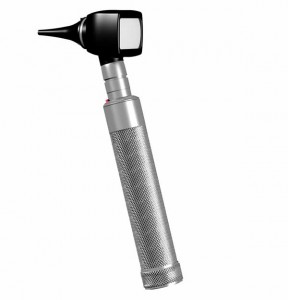  ® ®
|
Reading Spark Plugs |
|
I am blessed to be active in the vintage Japanese motorcycle world. It means I spend a lot of time communicating with others on technical issues regarding these machines, and I really enjoy doing it. One thing I have noticed is how much misunderstanding has to be overcome in many of these conversations. For example, spark plug reading.
Look, I am not against folks trying to tell as much as they can from looking at their engine's spark plugs. It's a natural, intuitive thing to do. But user forums seem to promote an ethic of reading plugs that is at best incomplete.
Can a lot be told from a spark plug? Sure. There is a blue band that moves along the ground electrode that tells ignition timing. The further up the electrode the band appears, the more advanced the timing. A dark ring at the bottom of the ceramic, inside the plug, hints at mixture strength. As the mixture richens, the band sinks lower in the plug. Specks of color here or there indicate certain things. Even the texture of the ceramic, where most of the reading is done, is informative, with a grainy, pebbly ceramic indicating overheating.
Yes, these are real things. But there are five things to remember. First, these are all very very subtle indications, nuances really, and not the kind of thing an amateur is going to be able to do. Second, these are all tuning things, that is, tweaks and adjustments so very small they are more art than science. Three, you must be running a very neutral fuel such as race gas to avoid colorations and odd deposits that will otherwise mislead. Fourth, you can't read a plug that has been abrasive blast cleaned. You shouldn't be doing this to your plugs anyway, but it is doubly important when trying to read them. And finally, you must not allow the engine to idle before removing the spark plug, because idle is the least efficient circuit and as such will mask over everything else.
Speaking of idle, a normal looking plug with a non-matching, incongruous darker, even black outer ring at the end of the threads, is an indication of overly-rich idle circuit. Other gross indications are orangish color flecks, which is plug overheating, such as when a 7 plug is used in place of a number 8. Silvery, solder-like residue near the center electrode is detonation. It is literally aluminum from the piston-- watch out! Pitch black deposits can be one of two different things. If the deposit is fluffy, dry and sooty, this is gross combustion ineffiency from either too much fuel or too little spark. If the black deposit is not sooty but rather shiny or greasy, and leaves a brownish oily smear on the finger, this is again weak combustion, either from oil in the combustion chamber, or again, a weak spark, and you determine which by making the standard tests on the engine.
The proper plug color found in Japanese overhead valve engines doesn't at all resemble the pictures found in virtually all books and on online. Those images come from 1950s cast iron V8s. Judging from those pictures, a chocalate brown color is ideal. Not so in Hondas. This color in a Honda engine would be overly rich. A Honda four normally colors gray with just a bare, almost imperceptible, hint of tan.
To summarize, plug reading is really only a viable means of diagnosing anything in two situations at opposite ends of the reading spectrum. These are the highly controlled and unique world of racing, with its specialized fuels, opportunities for high engine loading, high engine speeds and very small tuning changes. The other end of the spectrum is the gross, simple things comnected with engine wear condition, not subtle tuning. This includes evidence of very heavily carboned plugs, whether for fuel or other reasons. Anything in-between these two opposite ends of the diagnostic realm is not reality. You can expect to tell in your street bike only very very general things by looking at the spark plug.
The much more subtle indicators are there for the race tuner, not the fellow tinkering with his bike in the garage. That is, they offer the kinds of information relevant for a machine that is tuned to an edge. This is not the bike whose cylinder compression varies all over the place, whose carburetors haven't seen adjustment let alone service for years, whose air filter is falling apart, plug wires rotting off their posts, tires 30 percent under-inflated, and in whose tank is four month old pump swill. For the latter all you can expect is the grossest of indicators.
Recommended reading: |
|
Last updated January 2022 Email me © 1996-2022 Mike Nixon |
